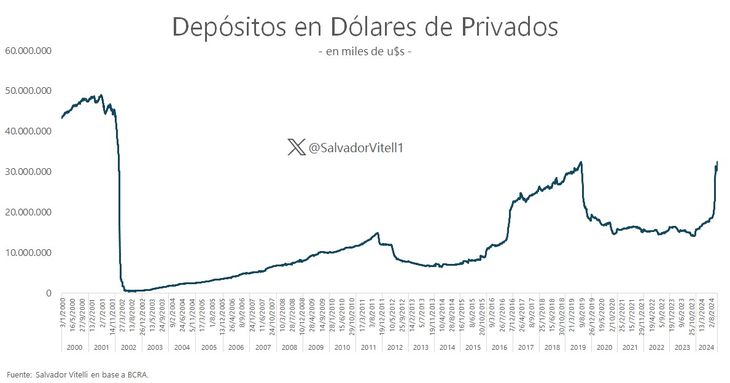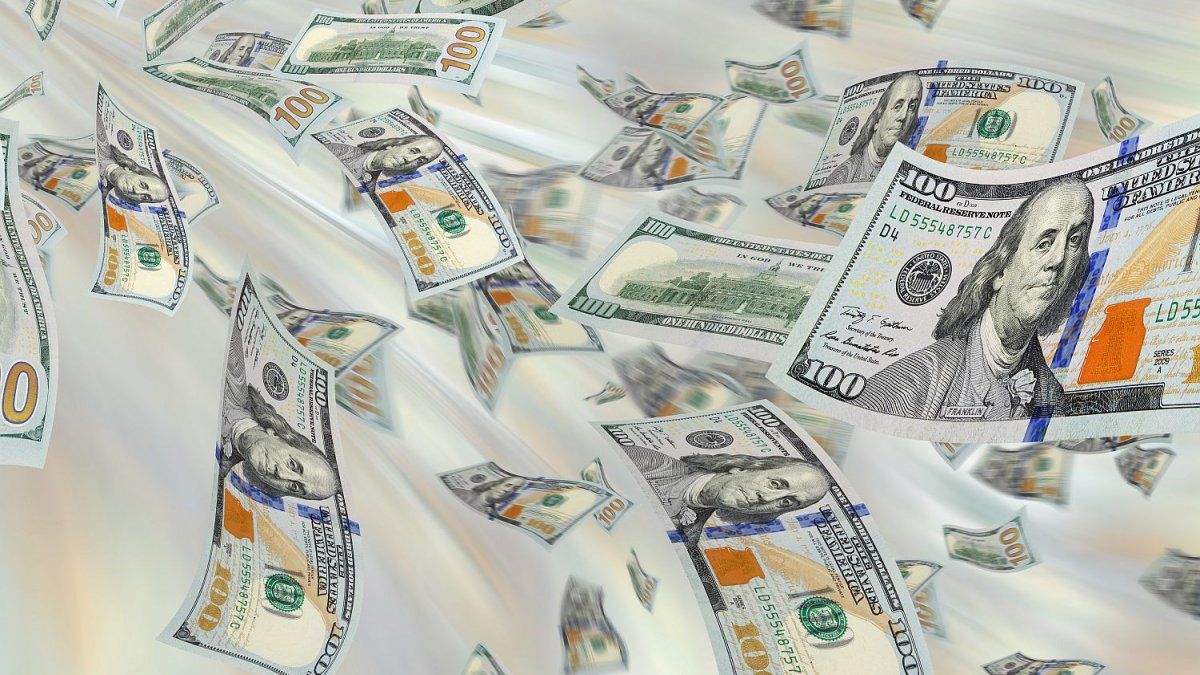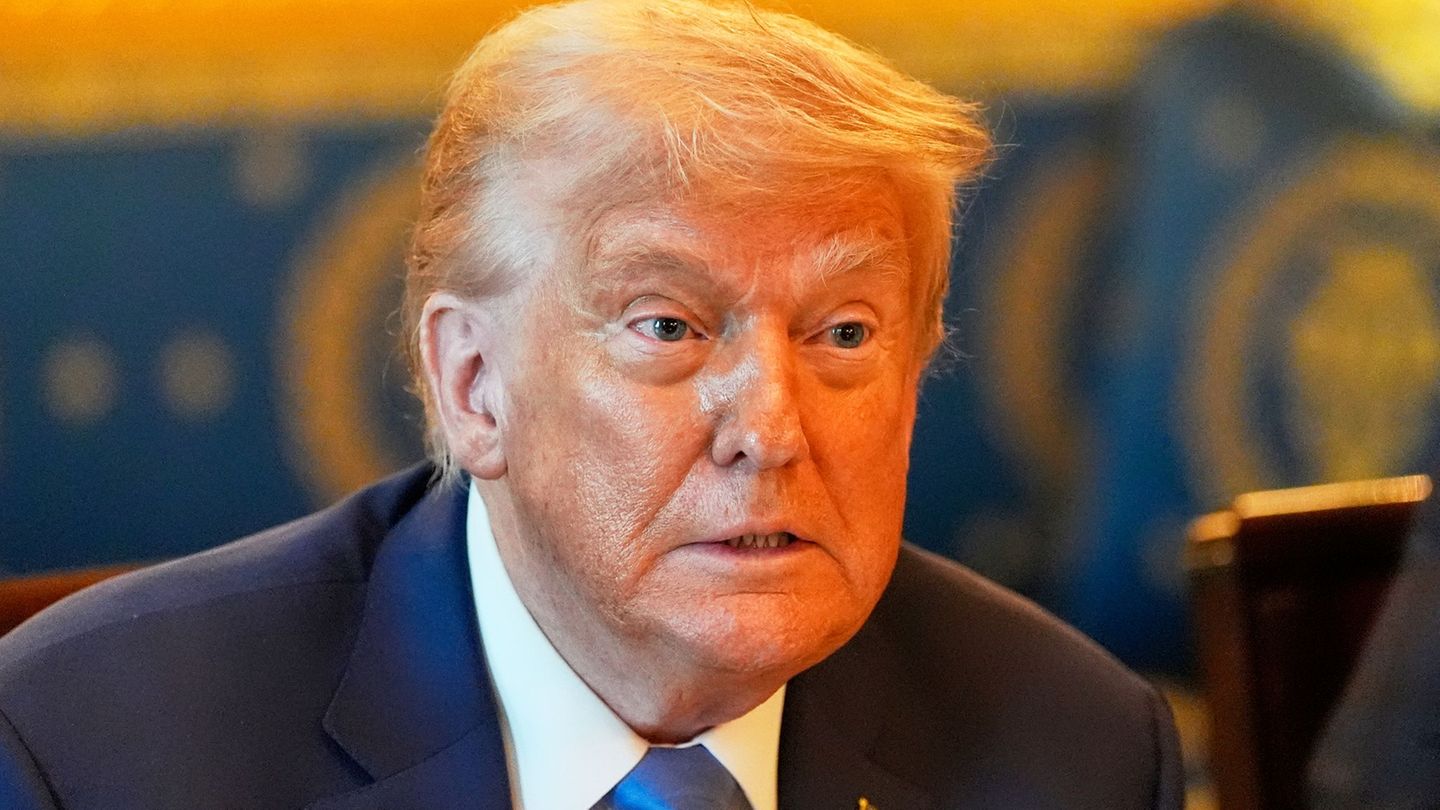The first stage of laundering ends and dollar deposits reached maximum levels in more than 22 years, that is, since February 2002. The market analyzes the process and anticipates what it expects in the future.
The first stage of the laundering ends, which had been extended for a month until October 31, and it is time for balances in the city. The analysts’ view is, in general, positive, since Some US$18 billion entered the financial system thanks to the asset externalization regime. Thus, bank deposits in dollars already exceed the nominal maximum that they had reached on August 12, 2019, which was US$32,492 million. Today, they are already close to US$33,000 million, they can reach US$35,000 million on Monday in the afternoon (when, due to the 2-day delay in public data, the final result will be known), and is the highest level since February 2002, before the “corralito” opened. The market now analyzes how the first stage impacted the financial variables and projects how the process will continue.
The content you want to access is exclusive to subscribers.
deposits in dollars.jfif

Without a doubt, laundering was key in the process of increasing dollar deposits in banks given that, prior to the regulation of this asset externalization regime, August 14, there were about US$18.6 billion. The numbers reflect that This asset regularization regime is doing even better than that of Mauricio Macri’s governmentat least in terms of banknote entry (we have to see how the total numbers end up), and that is why it meant a strong boost for the reserves of the Central Bank (BCRA).


The Government used money laundering as a message to the market that it was on track to meet its 2025 debt payments.
And, according to economist Elena Alonso, “Many people were encouraged to enter as the money laundering progressed, some as a strategy to begin generating interest with the dollars they had under the mattress.“and highlights that it was an opportunity to put that money to work. “I think it was better planned than the money laundering that had been launched during Mauricio Macri’s administration because it was very beneficial in tax matters, which attracted small savers, and also The threshold of US$100,000 with special conditions was very positive.
The economist Federico Glustein says in that sense to Scope that “the laundering was successful and we are at a stage in which the mechanisms of dollar entry tend to be replicated” and that catches on well in a market in which, as he explains, “having dollars under the mattress means losing between 4 % and 5% profitability per year in a context in which rates perform well.
Consequently, since mid-September, which is when the laundering began, but, above all, towards the end of that month, a growth in dollar deposits was observed. That was sustained in October, with lower flow there, but it was sustained. “Although there were variations in the intensity of the flow throughout the process, the data, to date, show that the measure for the Government is successful and contributed to exchange stability,” evaluates Glustein.
“The laundering was successful and not only because of the amount of dollars that managed to enter, but also because, in this first stage, a large part of the dollars that entered remained within the system,” notes market economist Christian Buteler. It stands out that the regime raised larger funds in cash than Macri’s money laundering and that this made it very successful.
However, Buteler suggests that we must see how the dynamics of the second stage continue, whether the funds remain in the financial system or not and what assets continue to enter the program.
News in development.-
Source: Ambito
I am a 24-year-old writer and journalist who has been working in the news industry for the past two years. I write primarily about market news, so if you’re looking for insights into what’s going on in the stock market or economic indicators, you’ve come to the right place. I also dabble in writing articles on lifestyle trends and pop culture news.




